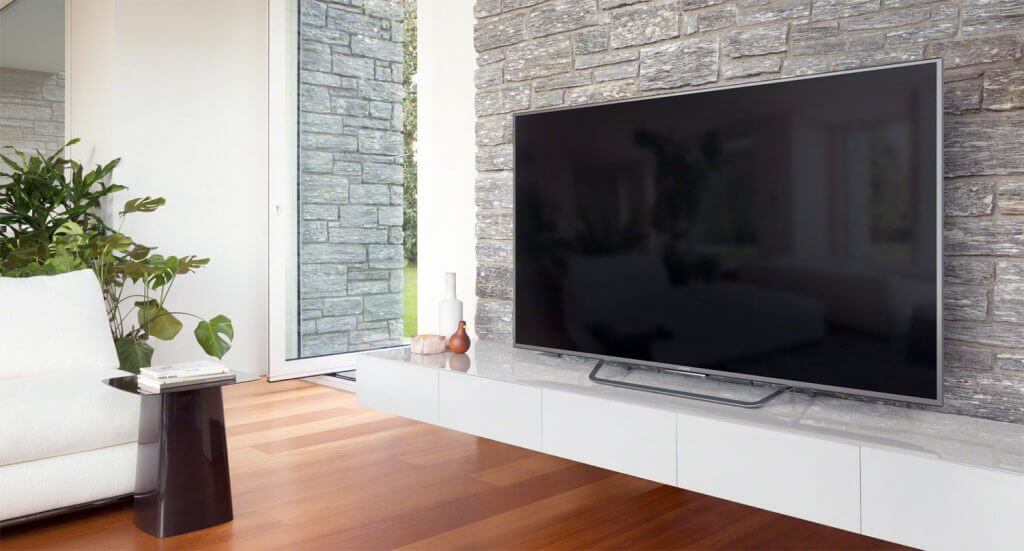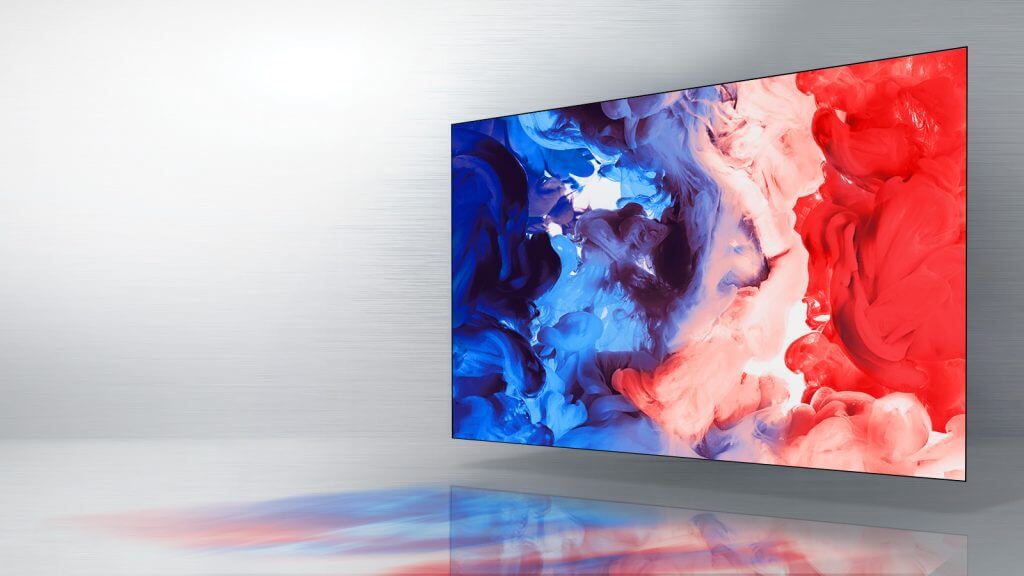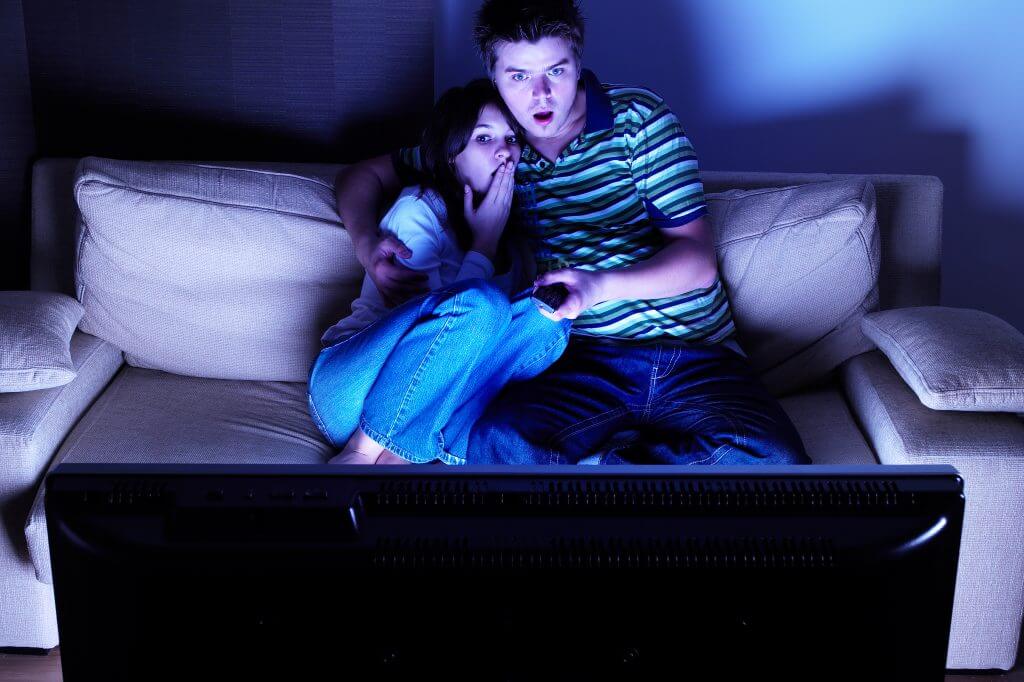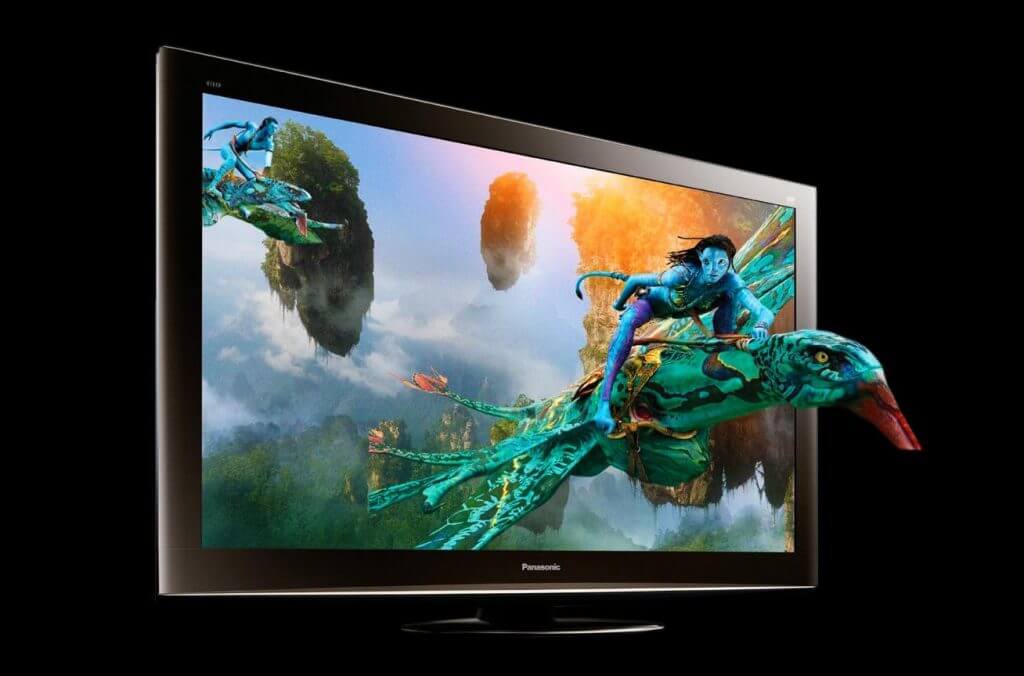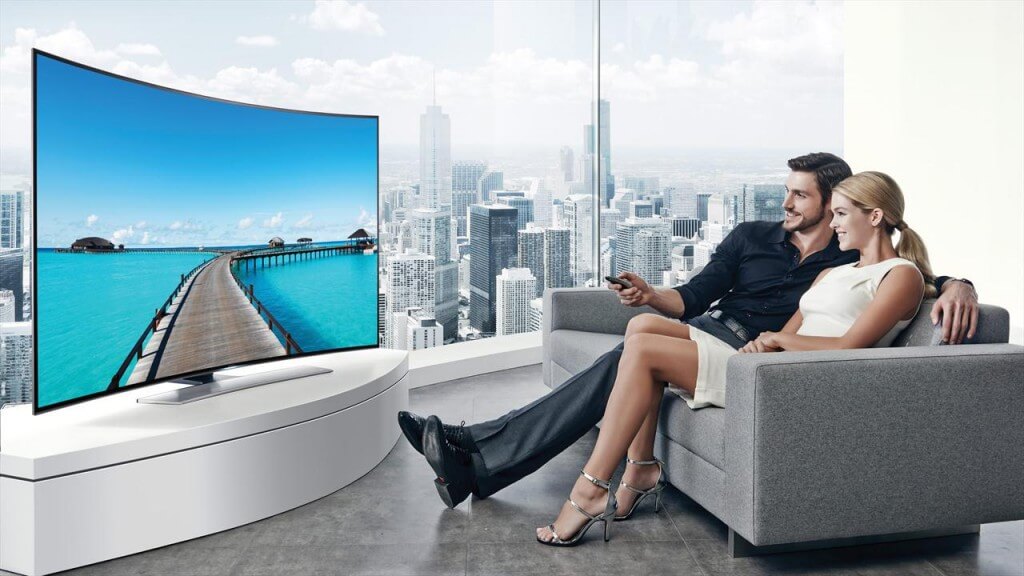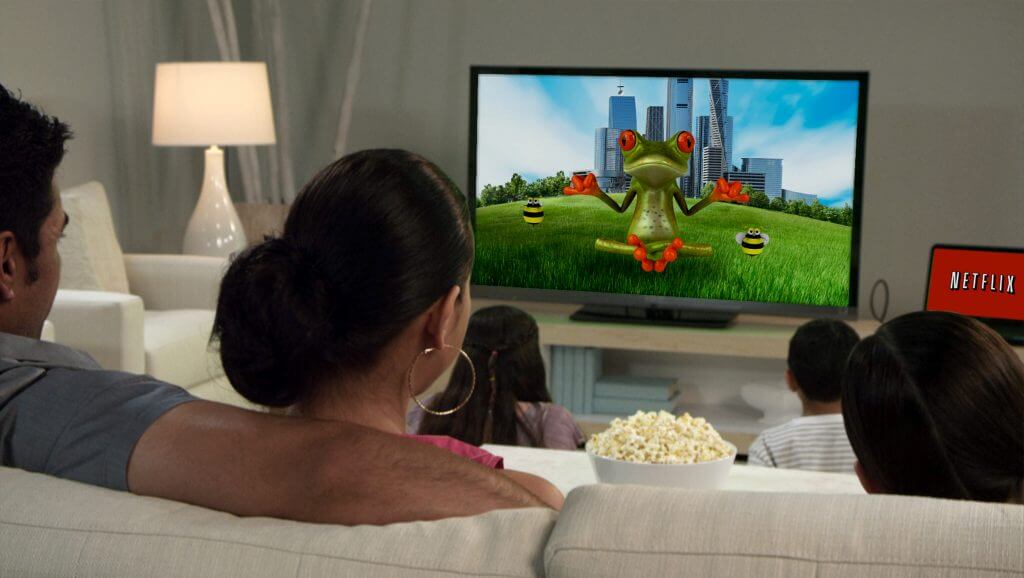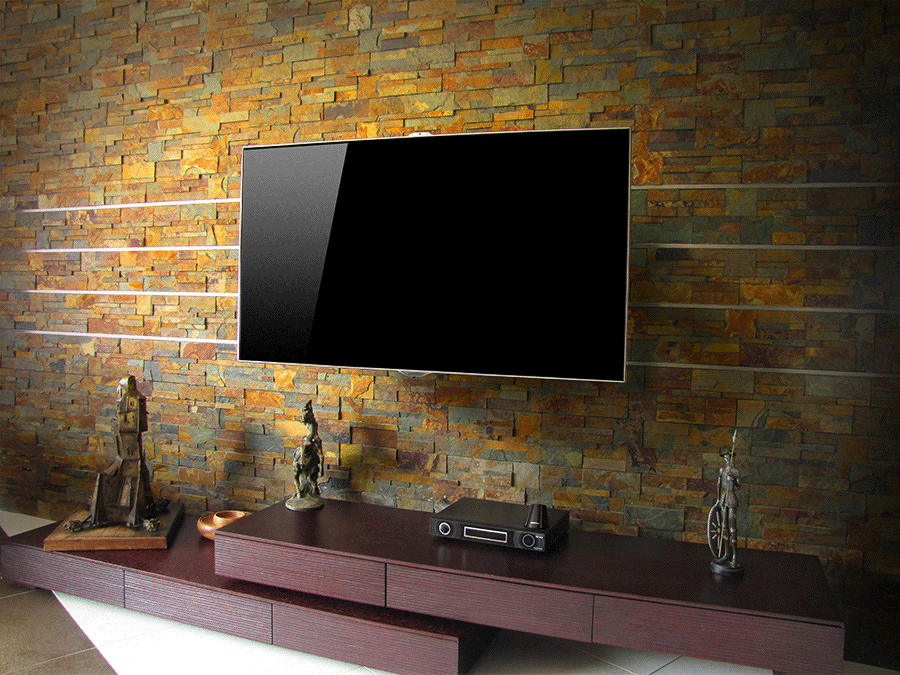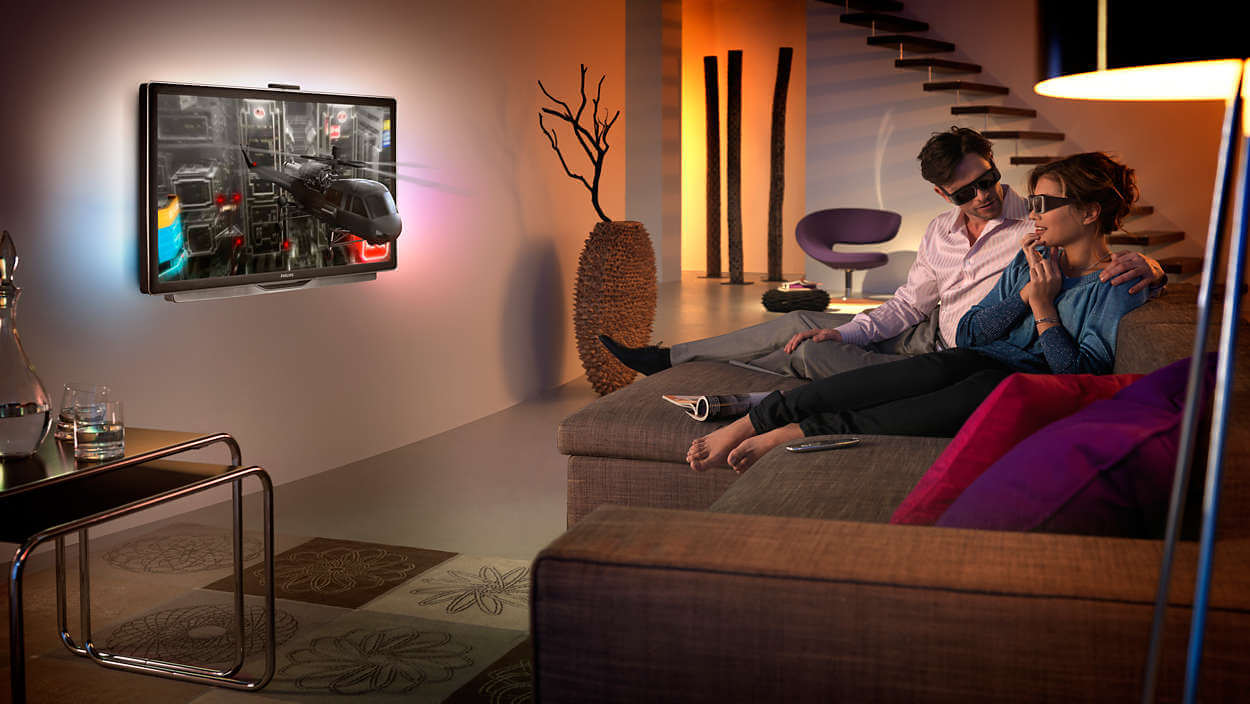
More and more people are choosing to skip the theater and watch movies in the comfort of their own home. What features make the best TV for watching movies at home? Where can I find a great TV for watching movies at a price that fits my budget?
In this free online ‘TV for Movies Guide’, we will show you:
- What are the 12 features that make a great TV for watching movies
- What are today’s top HDTV technologies for movie watching
- Based on your budget, what is the best TV for watching movies and TV
- Where to shop for televisions to watch movies online
There are more considerations to examine when shopping for a television for your home theater, than a TV for gaming or TV for watching sports. We know the few extra features your HDTV needs to insure a great movie watching experience. We will show them all to you below and give you the key insights to help you buy the best TV for watching movies within your budget.
| TV | Year | Sizes | Type | Movie Rating | Cost | See Today’s Prices – click buttons | |
|---|---|---|---|---|---|---|---|
| LG B6 | 2016 | 55″ 65″ | 4K OLED | 9.1 | High End | BestBuy | |
| Vizio P Series | 2016 | 50″ 55″ 65″ 75″ | 4K LED | 8.7 | High End | BestBuy | Amazon |
| Samsung KS8000 | 2015-2016 | 49 55″ 60 65″ | 4K UHD LED | 8.4 | High End | Amazon | |
| Vizio M Series | 2015-2016 | 50″ 55″ 60″ 65″ 70 80″ | 4K LED | 8.3 | Mid Range | Amazon | BestBuy |
| Vizio D Series | 016 | 40 50″ 55″ 58″ 65″ | 4K LED | 7.3 | Budget | Walmart | |
| Hisense H8C | 2016 | 50″ 55″ | 4K LED | 7.1 | Budget | Amazon | BestBuy |
The criteria for displaying the best quality image and immersive cinematic experience when watching a movie in a darker setting are as follows:
- Large screen size of at least 55″
- Higher screen resolution
- Excellent side viewing angles
- Accurate color calibrated to D6500K color temp
- Contrast – an excellent contrast ratio
- Judder – no judder during side to side panning
- Black Uniformity – very deep black levels
- Local Dimming
- Fast refresh rate
- Enhanced audio and easily audible voice dialog
- You want it ‘Smart’
- 3D capable or not
Different HDTVs come equipped with certain features and specs the make them better for watching movies. Many of these terms can be confusing when you’re shopping for a new TV set. Below, we will explain them in a simple, easy to understand way.
What 12 features to look for when buying a TV for watching movies
What Screen Size should I get?
. Consider where you’re going to put your new set and how many people will typically watch at one time.
Pick the largest screen size that’s within your budget and fits comfortably into your space. The best value in TVs today considering performance and price is between 55 and 65 inches.
How close you sit to the TV is also a major consideration when determining screen size. If you sit close, you don’t want to see the individual pixels on screen.
As a good rule of thumb, you should sit a distance no more than two times the diagonal of the screen for HDTV, and a maximum of 1.5 times the diagonal for 4K Ultra HD.
In short, you can sit twice as close with a 4K UHD TV. To learn more, check out our TV screen size guide to calculate what size TV you should get for your room.
- We recommend at least a 55″ TV screen
- Choose a screen size and resolution appropriate for the distance you will sit from the screen
- Buy a 1080p HDTV that is 1.5 times the viewing distance
- Buy a 4K Ultra HDTV that is 1 times the viewing distance
What Screen Resolution should I buy? 4K or HD?
The standard for HDTVs today is 1080p HD format, which has 1,080 lines of resolution. 1080p is also called Full HD, and should be the minimum resolution you consider when buying a new TV.
We recommend avoiding 720p models, even in the smallest TV sizes.
Higher resolutions produce more detailed images. 4k TVs (also called Ultra HD or UHD) are capable of displaying more detailed images than a 1080p TV.
These Ultra HD models have four times the number of pixels as current HDTV screens.
The biggest benefit of 4K UHD TVs is sharper text and small objects on the screen have greater detail. Images appear richer and more lifelike than on an HDTV set.
While 4k online video streams arent at the quality you get from 1080p Blu-rays (the compression affects the video quality), the upcoming 4k UHD Blu-rays will likely offer a great jump in video quality from what we see today.
If you can find it, Ultra HD video looks great on 4K TVs. Unfortunately, there are little 4K programming, and so far there’s only a handful of streaming options available.
Most notably, rentals from Amazon, and a few programs from Netflix. Specialty services like Dish Network, DirecTV, and UltraFlix are rolling out 4K download services.
While UHD sets can upscale existing HD content, the results do not look as sharp as original 4K programming.
Major TV manufacturers are rapidly shifting from HDTV technology to 4K sets. For example, Vizio has only one HDTV line left in its new 2016 model lineup.
UHD prices are falling. Vizio’s 65-inch M-Series 4K Ultra HD set retails at just $1,500.
- Avoid 720p resolution TVs
- Full HD 1080p is still the most common screen resolution today
- Choose a screen resolution appropriate for the distance you will sit from the screen
- We recommend you buy at least a 1080p HDTV
- If you want to future-proof your investment, a 4K UHD is a good idea
Should I get HDR?
HDR is a new feature of 4K Ultra HD sets. HDR stands for high dynamic range.
High dynamic range is a reference to the ability to deliver increased brightness, more contrast levels, and more colors. HDR is not applicable to 1080p HDTVs. HDR is an upgrade of the 4K or Ultra HD format.
Ultra HD Premium is the name being adopted by UHD Alliance, an industry trade group. You will see “Ultra HD Premium” on a growing number of sets this year.
Dozens of TV electronics manufacturers are now supporting the basic minimum specification for HDR compatibility. To distinguish them from standard 4K UHD TVs, manufacturers are establishing new monikers for sets with this new feature.
Created and licensed by the group that brought us Dolby noise reduction and surround sound, “Dolby Vision” is a more demanding version of HDR. A Dolby Vision set, in theory, has to meet a stricter set of criteria to display HDR content.
2016 looks to be the year of HDR technology confusion.
Some TVs will be Dolby Vision-compatible (like Vizio). Others will be Ultra HD Premium-compatible (like Samsung). While some being compatible with both standards (like LG).
Sony, in a move that will further confuse shoppers, at least for now, plans to go it alone. The company has chosen to eschew both the Ultra HD Premium label and Dolby Vision licensing. Instead, Sony is labeling its Ultra HD TV sets “HDR”.
Currently, there’s very little HDR programming available. A handful of HDR shows will only be available via streaming services like Amazon Prime and Netflix over the next 12 months. In addition, a few dozen movies are promised in the new 4K Blu-ray disc format.
- Very little “HDR” programming is scheduled to be available over the next year
- An HDR standard has not yet been settled
- If money is no object, buy a UHD TV that is Dolby Vision compatible
How Important is Contrast Ratio?
Contrast is one of the most important elements movie fans should look for in a HDTV. An TV with high contrast can display very dark objects onscreen.
In other words, things that are black will look black. From action movies to dramas to horror films, consider how often movies of all kinds like to use nighttime scenes to set a mood.
Unfortunately, the way manufacturers measure contrast ratios varies widely. We consider it best to see for yourself how a TV displays shadow details. Find a movie with dark scenes and seeing how well it reveals detail in the shadows.
- A high contrast ratio is one of the most important elements for watching movies on a HDTV
- You can ignore manufacturers’ contrast ratio specs
- Determine for yourself how a HDTV displays dark scenes
What is Judder?
Many TVs have to do a little processing to be able to make the video play, and this process makes some frames linger longer than others. On panning shots, this results in judder.
Judder is the unwanted effect from converting film, which is 24 frames per second, to video which is 29.97 frames per second. Judder can make the video look shaky.
For watching movies, a TV that is able to adjust itself to properly play 24 fps content, with no lingering frames, is a must.
- Judder can make the video look shaky
- Purchase a TV that is able to properly display 24 fps content
Is Black Uniformity a Concern?
If a TV has bad black uniformity, certain parts of the image will be lighter than they should be, which can ruin the effect of a shot or scene. The TVs lighting should be perfectly diffused across the screen.
The lighting in movies is set up for a specific artistic purpose. A TV with great black uniformity has fewer of these lighting issues.
- The TVs lighting should be perfectly diffused across the screen
- Black uniformity, or perfect black displays solid black all across its screen
- You want a HDTV that displays black accurately
How does the TV handle Local Dimming?
When done correctly, this will make the blacks look very deep, because there wont be much light in the dimmed areas. You view a better image because of a higher contrast ratio.
Some TVs are able to adjust their lighting and dim specific areas of the screen. For others because of their specific technology, like LCD TVs with LED edge-lit back lighting, is a tricky thing to get right.
- Local dimming changes the uniformity of the LED back lights
- For LCD TVs, we recommend an LCD TV with LED back lighting
How fast a Refresh Rate do I need?
Unfortunately, a 60 Hz refresh rate can make things look blurry or jittery in scenes with rapidly moving objects. This is a particular problem for LCD HDTVs.
To create a better quality picture, manufacturers often doubled the refresh rate to 120 Hz, and in some cases, increase the refresh rate up to 240 Hz.
TV brands handle the faster refresh rates in different ways.
One method is to simply insert black images between the original pictures. This tricks the viewer’s eyes into seeing a more solid, less blurry picture.
Another technique is to generate and insert new images. You display more realistic-looking motion, by showing a state of movement in between the two adjacent pictures.
A word of caution regarding refresh rate: beware of terms like “effective refresh rate,” which means the actual frame rate is half of the stated rate (e.g., a “120 Hz effective refresh rate” is actually a 60 Hz refresh rate).
- 60 Hz refresh rate can make things look blurry or jittery
- A faster refresh rate is preferred
- Don’t buy a TV with less than a 120 Hz refresh rate
Go for more HDMI connections
Manufacturers may offer fewer HDMI plugs on the back to shave costs . The HDMI ports can get used up quickly.
If you add a sound bar, a Apple TV or Chromecast, and a game console, and you’ve used three ports already. A couple extra HDMI ports will be nice for future expansion.
If you have decided to spend the extra money and buy a 4K Ultra HD set, to accommodate future Ultra HD sources, make sure the TV’s ports support HDMI 2.0. Many TVs on the market today only have one port that supports the 4K copy protection scheme known as HDCP 2.2 (High-bandwidth Digital Content Protection).
- Look for at least 4 HDMI ports
- 4K shoppers should ask about HDCP compatibility
What about audio?
Even the most expensive HDTVs can have an Achilles’ heel: poor sound quality. It’s a result of the trend toward TV slimness. There’s just not enough room for larger speakers to produce full, rich sound.
We suggest seeking a HDTV with thicker frame size or a separate rear woofer. The extra frame size makes room for more forward facing speakers. A separate rear woofer adds bass and helps the main stereo speakers.
You have three other optional choices for audio. You can use wireless headphones, get a surround-sound system, or buy a soundbar.
A television with built-in surround sound usually has the ability to play different audio channels on a range of different speakers. The TV generally has three speakers. At times, it will have two additional rear speakers.
Many movie fans will choose to get a separate audio system for the ultimate sound experience. For those that don’t want to position or mount several speakers around the room, a built-in surround systems is a great feature.
Soundbars are popular choice. They can produce a fuller, more satisfying cinematic audio experience. They be installed in a matter minutes, and you can grab a nice one for $300 or less.
Most can mount under a wall-hanging TV. Newer models are also thin enough to fit under a TV stand without blocking the bottom of the picture.
- Look for a TV display that has extra frame size for the speakers or a separate rear woofer
- Consider buying a soundbar or surround sound system
How about a Smart TV?
Most modern Smart TVs, like those from Samsung, LG, Sony, Philips, and Panasonic, all offer access to lots of movie and video apps.
Google provides its Android TV platform to companies such as Sony. Roku offers its famously intuitive interface in budget TVs from Insignia (Best Buy’s brand), Hisense, and TCL.
While the major services, such as Pandora, Hulu and Netflix, are included in most smart TVs, check to make sure the TV you buy has the options you want.
- Smart capability is becoming a standard feature in TVs, so it’s less of a factor in your buying decision.
Should I buy a 3D TV?
Many view 3D viewing as one of the most exciting viewing technologies to recently move onto the small screen.
Using nothing more than special pair of plastic 3D glasses, an image can jump off the screen. It should be noted that a television which can display 3D images can also reproduce standard 2D content. The 3D capability is merely an enhancement or an option to your regular TV viewing. You do not need two different televisions!
More and more movies are being shot in 3D and released for home viewing in Blu-ray 3D. It should be noted that you will need a Blu-ray player that can play 3D discs. Blu-ray 3D discs are usually more expensive than their respective standard Blu-ray movie.
Some streaming video services are even beginning to provide 3D content. This may be more of a viable option in the near future. Conversely, if you are a sports fan, networks have all but killed live 3D TV broadcasts.
- If you are a fan of 3D movies, you may want to pay extra for a 3D ready TV
- You will need additional components (3D Blu-ray player and 3D Blu-ray discs) or services (online 3D streaming) to enjoy this option
Now that you understand the features to look for when buying a TV for watching movies, we need to evaluate the different type HDTV technologies. We can compare each to the criteria we have established for what makes a great TV for movies.
Top TV Types for watching Movies Explained: OLED, LCD, LED LCD, Quantum Dot
Basically, there are only two types of TVs on the market today: OLED, and LCD.
What makes OLED TVs good for watching movies
Organic light-emitting diode, or OLED, is the current top-of-the-line HDTV technology. The distinct advantage of OLEDs over LCD LED TVs is the noticeably deeper black levels.
OLEDs use a layer of organic LED panels, controlled at the pixel level, to create stunning levels of contrast and absolute black, or ‘perfect black’. A favorite demonstration of OLED technology is video footage of fireworks exploding in a black sky. Many OLED TVs use a sample and hold technology when displaying an image. Each frame of the video is displayed for a certain amount of time before transitioning to the next. The motion blur trail on fast moving objects is greatly reduced or removed completely.
OLED TVs are today’s very best TV for watching movies. Another benefit for sporting fans: OLEDs are also the best TVs for watching sports.
Currently, LG is the main company actively pursuing OLED technology in large TV screen sizes. OLED TVs under the Philips and Panasonic brand names are scheduled to launch in 2016.
Most new OLED models have Ultra HD 4K resolution, but a few, cheaper HD OLED models are still around. Prices range from about $2,000 for a 55-inch HDTV to $5,000 or more for a 65-inch Ultra HD 4K model.
OLED TVs: Pros & Cons
- The ‘best’ TV picture
- Colors truly pop
- Perfect black and deeper contrast
- Retains image quality when viewed from the side
- Motion blur is eliminated or reduced
- Top of the line prices: you may need to be a ‘movie star’ to afford one
- Lower peak brightness than some LCD sets
- Availability
Why are LED and LCD Sets good for watching movies and TV
Liquid Crystal Displays, or LCDs, represent the lion’s share of televisions manufactured and sold today.
These HD and Ultra HD sets use light-emitting diodes (LEDs) to illuminate the LCD screen. LED LCDs are more energy efficient and can be extremely thin.
One of the major advantages of LED LCDs is a better mix of light and dark areas in a scene. Most lower-end LCD sets use LEDs on the edge of the screen (edge-lit) for back lighting. Higher end LED sets have light-emitting diodes directly behind the screen, in a grid of “zones” that can be lit up or darkened individually (known as back-lit or full-array back lighting).
This arrangement of LED lights makes the back light more precise, creates greater contrast, and allows a more-detailed picture. Previously only reserved for top-tier models, full-array back lighting is becoming more common on modestly priced Ultra HD sets.
Back-lit LED LCDs not only make great TVs for movies, but are also one of the best TVs for gaming.
While a top-of-the-line 90-inch LED LCD model can go for upwards of $8,000, a no-frills 32-inch screen can be had for as little as $200.
Quantum Dot Technology
Quantum dots is another LCD technology becoming more common. Basically, an LCD TV that uses quantum dots has another layer or added rail of different sized nano-crystal dots that light up when the LED back light hits them. The result is increased brightness and a wider color spectrum. Samsung has recently launched a ‘true-to-life picture quality’ Quantum dot SUHD TV line.
LCD TVs: Pros & Cons
- Bright screens visible even in a sunny room
- Thinner display sizes
- Wide array of prices, sizes and features
- Image quality improving with new technology
- Some affordable Ultra HD 4K models
- Loses some shadow detail
- Images fade when viewing from the side
- Imperfections when displaying rapid motion
Should I buy a TV with a Curved Screen?
Mostly used for OLED TVs and 4K LCDs, another innovation intended to attract HDTV shoppers’ is curved screens. Samsung and LG are two supporters of curved screens. The claimed benefit of the manufacturers is that curved screens create a more immersive TV-watching experience.
Curved screens have no technical advantage over flat panel displays, and there are some distinct disadvantages.
First, the slightly curved aspect reduces the available side-viewing angles, limiting the best viewing for people sitting in the middle, or center sweet spot. Also, LED models are less likely to produce uniform brightness across the screen.
In addition, compared to the equivalent flat screen, curved models are more expensive. For example, a 4K, 65-inch curved LCD model costs about $200 more than a comparable flat panel TV.
Last but not least, some testers, such as Consumer Reports, have reported viewer fatigue caused by the curvature.
Curved Screen TVs: Pros & Cons
- May create a more immersive TV viewing experience
- Unique, and some feel more stylish design
- No technical advantage
- Limited side viewing
- Must be in center ‘sweet spot’ for best viewing experience
- More expensive than equivalent flat screen
- Could possibly cause viewer fatigue
You have all the information you need to get the best TV for watching movies and television
In a hurry? Here’s a quick recap of the most important things to consider before you buy a television.
- Dont buy a TV with less than 1080p resolution (i.e. avoid 720p sets)
- Consider a 4K Ultra HD TV
- OLED TVs look much better than LED LCDs, but are considerably more expensive
- Curved TVs add nothing to the picture quality
- Look for an HDR-compatible set
- Ignore manufacturer contrast ratio specs. Let your eyes (or independent reviews) be the judge
- Look for at least 4 HDMI ports
- 4K shoppers should ask about HDCP compatibility
- These days most TVs are smart TVs
- Look for enhanced audio in your TV or plan to add a soundbar
- I always avoid extended warranties
Now you know what to look for in a HDTV that is perfect for watching movies. You also are aware of the different type TVs and their strengths and weaknesses. It’s time to decide what TV are you going to buy.
Find a TV for watching movies in your budget
At this point, it usually boils down to … the budget! Usually movie fans fall into one of 3 categories.
The high end fanatic. Price is not a consideration (or relatively small one). You want to latest and the greatest. You’ve got to have the ultimate viewing experience.
The serious movie and TV watcher. You love to watch movies, and want a great cinematic experience. You’ll pay more for some extra bells and whistles, but there are some budget considerations.
Then there’s the serious budget minded viewer. Your tired of watching online HDTV streams on your tablet or iPhone. Perhaps you would love to remove the old projection TV, that’s the size of your washing machine, from your living room.
Whatever the case, a new HDTV is a serious stretch and a luxury. You’re not be looking for the cheapest television you can find, but you are looking for a discount TV, at a good price, that will deliver the most bang for the buck.
With that in mind, we will break our recommendations down into those 3 categories: High End, Mid-Range, and Budget televisions for watching TV and movies.
What is the Best High End TVs for watching movies
For high end HDTVs, when money is no object, go ahead and get a new OLED TV with Ultra HD 4K resolution. At present, 55″ models are selling between $3500 and $4000, with 65″ models going for $5000 or more.
What is the Best Mid-Range TVs for watching movies
At the top-end of the best mid-range television sets, we really like the new Samsung Quantum dot nano-crystal SUHD TV line. It has amazing range of colors and superior brightness and contrast.
The 2016 Vizio P Series has one of the best picture quality we have seen. It really shows off its best features in a dark room. If you’re interested in a TV for watching 4k movies will be more than pleased. It’s not a perfect option, with sub-par upscaling of low-quality content – like 720p digital cable or lower resolution streamed video. Currently, the Vizio P Series 50″ to 75″ models are on sale from $899.99 to $3799.98.
What is the Best Budget TV for watching movies
The 2016 Vizio D Series 4k TV is the best budget TV for watching movies. From the features to the design, it is a very basic HDTV, but it provides a great picture quality at a good price.
The Vizio D Series, starting at just over $200, has a great native contrast ratio enabling it to produce deep blacks for watching TV and movies. The images will appear softer if you are watching lower quality content like cable TV or regular DVDs. Despite this limitation, you will not find a better discount TV for watching movies and streaming online video.
Where can I buy a TV for Watching Movies Online
Want a new HDTV and not sure where to find a TV for watching movies online? We recommend a handful of trusted sources.
- Amazon
- Best Buy
- Walmart
- NewEgg
- PCRush
- Abe’s of Maine
- PC Mall
- Tech For Less
Conclusion
So what TV did you buy?
Go ahead and invite some friends over, and watch ‘The Hunger Games’ series from start to finish.
Do you have any tips for movie fanatics who are looking for a new television? Can you recommend a good TV for viewing movies and TV? What HDTV do you think is the best TV for watching movies? Did we miss anything or do you disagree with anything here?
Be sure to leave us your thoughts in the comments! If you found anything you like in this guide please share it on your favorite social media sites. Thanks for reading.

